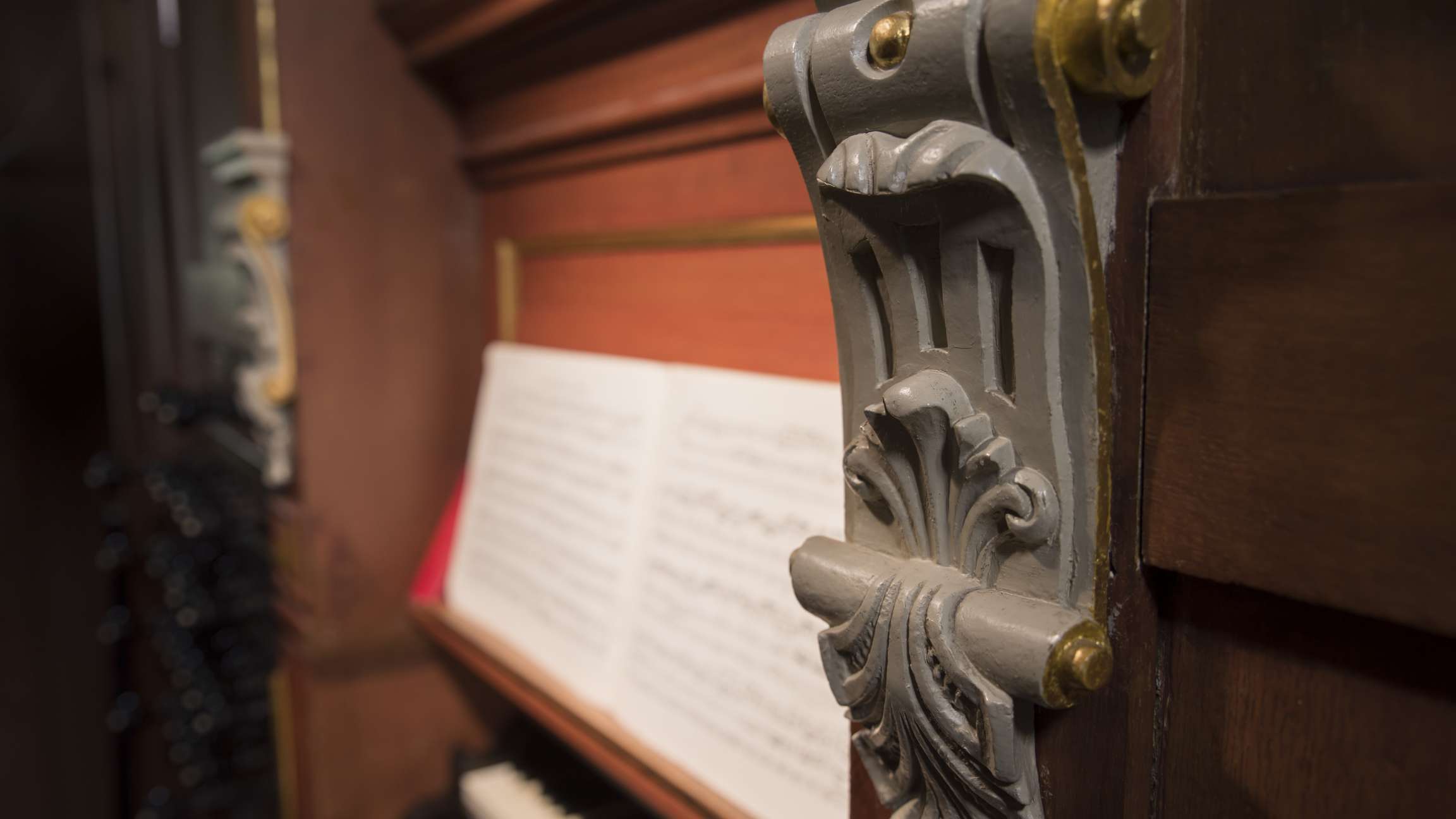
Prelude and fugue in D minor
BWV 539 performed by Reitze Smits
St Jacob's Church, Leeuwarden
Behind the music
A nineteenth-century composition?
The authenticity of the Prelude and fugue in D minor is not without dispute
Bach was very keen on the duo of prelude (or toccata) and fugue. In the first part, he could let his imagination run free, then show off his technical composition prowess in the second part. However, not all the prelude and fugue duos that have been given a BWV number are indisputably by Bach himself. The origins of the Prelude and fugue in D minor are dubious to say the least.
What is certain, however, is that the fugue is based on the second movement of Bach’s Sonata for violin solo, BWV 1001, from 1720. But that does not necessarily mean that he composer was also responsible for this arrangement. Various researchers have emphasised that the original piece for violin was a novelty that stretched the limits of the instrument with a great display of virtuosity. According to some people, the arrangement is actually no more than a dutiful rendition of the original. It is not like Bach to deliver something like that, although it may have been written by one of his pupils. In the interview, organist Reitze Smits explains that he is of a totally different opinion. He thinks it is only in the organ version that Bach has achieved his true intentions with regard to the piece.
There are yet more problems attached to the preceding two-voice prelude. Because what is this relatively short and simple prelude doing here actually? Would not Bach himself have been far more likely to choose an arrangement of the first movement of the same solo sonata – always supposing that he was responsible for the keyboard fugue? Moreover, the provenance of the prelude is completely obscure, as the piece only surfaced in the early nineteenth century, when it was added to the fugue.
Of course, there are other opinions as well; for example that the daringly unpretentious prelude is a marvel of elegance. Or that the incredibly difficult suggested polyphony for the violin finds its true niche on the organ.
It shows how difficult it is, even for musicologists who have spent their whole life with Bach, to put your finger on precisely what defines his mastery.
- BWV
- 539
- Title
- Prelude and fugue in D minor
- Instrument
- organ
- Genre
- organ works
- Year
- after 1720
- City
- Köthen/Leipzig
- Special notes
- The fugue is an arrangement of the second movement of the Sonata for violin solo, BWV 1001 from 1720. There is also a lute version of this movement, BWV 1000.
Extra videos
Vocal texts
Original
Translation
Credits
-
- Release date
- 26 June 2015
-
- Recording date
- 15 September 2014
-
- Location
- St Jacob's Church, Leeuwarden
-
- Organist
- Reitze Smits
-
- Organ registration
- Mayuko Banno
-
- Organ
- Christian Müller, 1727
-
- Producer
- Frank van der Weij
-
- Film director
- Jan Van den Bossche
-
- Directors of photography
- Diderik Evers, Ruben van den Broeke
-
- Music production, editing and mix
- Holger Schlegel
-
- Film editor
- Dylan Glyn Jones
-
- Colorist
- Jef Grosfeld
-
- Production assistant
- Hanna Schreuders
-
- Acknowledgements
- Rob Tigchelaar